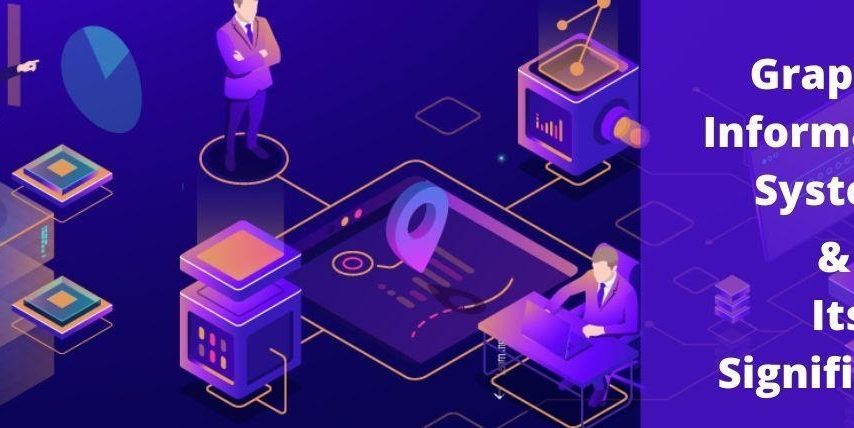GIS isn’t that difficult, and what’s additional, it may also be fun. After reading this article, you will not only understand the background information that GIS is but also gets the vocabulary to learn ArcGis and its associated tools.
Geographical Data Technology is categorized into three segments:
- GIS – Geographic Information Systems
- GPS – Global Positioning Systems
- RS – Remote Sensing
Geographic Information Systems (GIS)
The Geographic Information System is an organized set of some hardware equipment, software, and information. For gathering, managing, analyzing, and revealing all kinds of available geographical data that is documented on the internet.
GIS provides users to see, recognize, query, interpret, and visualize information from various perspectives that display connections, patterns, and developments in the style of maps, globes, reports, and charts.
A GIS assists user’s questions in such a way that it resolves problems using searching at the information in a manner that is immediately comprehended and can be easily shared. GIS technology can be integrated into any undertaking data framework structure. Many professionals are seeking GIS Certification these days.
GIS technology is a set of adequately organized and collection of computer hardware equipment, software, geographic information, and self-designed to proficiently capture, manage, update, analyze, manipulate and display all kinds of geographically documented data available on the internet.
GIS technology coordinates with regular database tasks, for example, inquiry and factual investigation, with the benefits which are offered by maps for specific visualization and geographic evaluation.
The database records (characteristic data) are attached to spatial information (feature layers). Schools will be the best examples of this. A specific area of the schools is spatial information.
More information, like, name of the school, identity provided by the school, and which type of school will make up the data more versatile. It is the organization of these two information types that empowers GIS to be such a powerful problem-fixing instrument.
Making inquiry of information related to layers, the ArcGis Training permits users to perform tasks in situations like “why” and “what if” and creates one map which results in the depiction of a visible investigation.
The five key components which are integrated with an operational GIS:
- Hardware equipment
- Software
- Data & information
- Users or Folks
- Techniques
Hardware equipment
The hardware equipment is the laptops or PCs on which a GIS operates. Today, a wide range of hardware equipment is available in the market which is capable enough to run with GIS. Some are centralized servers to desktop computers, Laptops, etc. are utilized in standalone or organized networking setups.
Software
The GIS software package provides you the features and tools in the software which are required to store, analyze, and show geographic data.
The key elements of the software package are:
- Database Management System (DBMS)
- Tools for inserting and manipulating of geographic info
- Tools that help geographic inquiry, investigation, and representation
- A graphical user interface (GUI) to access tools easily
Data & information
Perhaps the most significant part of a GIS is the information. Tabular information related to geographical databases can be gathered internally or can be purchased from another database supplier. Most GIS utilizes a DBMS to make and keep up a database to help arrange and oversee information.
The statistics that GIS operates on contain any records bearing a perceptible relationship to space, which includes any files about things and occasions that happen in nature.
At one time, this comprised of printed copy information, as conventional cartographic maps, surveyor’s logs, statistical measurements, geographic reports, and depictions from the field.
Advances in spatial information assortment, arrangement, and exactness have permitted more standard computerized base-maps increasingly to be accessible at various scales.
Users or Folks
GIS technology has limited value without folks that work with the system to manage and to create plans for making use of hardware equipment, software, geographic information, etc. GIS folks range from technical experts who plan design and maintain their gadgets, for the users who use it and to assist them in doing their regular work.
Techniques
An effective GIS operates consistently with well-designed and planned business policies, which is perfect for working models of GIS. By which a user can make unique models for each business organization.
Global Positioning System (GPS)
A network of 24 satellites to act as a Satellite-based Navigation System was placed into orbit by the USA, and it is known as GPS. Initially, GPS was intended for military applications only, but during the 1980s’ authorities created a framework accessible for civilian use too. GPS works in all types of climatic conditions, anywhere round-the-clock within the world.
The GPS is divided into three sections:
- The space portion
- The control section
- The user section
The US Air Force creates, manages, and supports the space and control sections.
The space portion
The space portion is having a suggested group of 24 working satellites that transmit one side signals which provide the present GPS satellite position and time.
The control section
The control portion comprises worldwide screen and management stations that maintain the satellites in their correct orbits through occasional command maneuvers, and manage the satellite clocks. It tracks the GPS satellites, transfers refreshed navigational information and managed to keep up the health and status of the satellite constellation.
The user section
The GPS receiver system fetches the indications from the GPS satellites, processes the received transmission to calculate the user’s 3D position and time. It is also known as the User Section.
Remote Sensing (RS)
For remote sensing, GIS includes maps, vector data, and imagery. The gathering of imagery is achieved through remote detecting. Remote sensing began with aerial photography in the late 1800s from locally available balloons.
Airplanes were utilized to gather data from above in the mid-1900s, and the first picture taken from space was on board the Apollo spacecraft in 1969.
The first imagery of the Earth was gathered in the mid-1970s’ when the first imaging satellite (ERTS-1) was launched. Pictures keep on being collected from both space and airplanes and are accessible to everyone on the web for their commercial or personal use.
In the 1950s, Ms. Evelyn Pruitt coined the term “Remote Sensing” for the artwork of recognizing, measuring, or observing any object without getting in any physical contact with it.
This procedure includes the recognition and estimation of radiation of various wavelengths reflected or produced from distant gadgets or materials. By which they might be recognized and classified by class/type, substance, and spatial appropriation.
Remote sensing, the science of acquiring information about objects or regions from a distance, is usually executed from airplanes or satellites.
Remote sensors gather records by recognizing the energy which is reflected from Earth, and they may be either passive or active. Passive sensors respond to outside stimuli.
They recorded radiation that is reflected from the surface of the Earth, which is generally from the sun. Because of this, passive sensors can only be used to acquire information throughout daylight. In contrast, active sensors utilize internal stimuli to gather statistics of the Earth.
For example – We can measure how much time does remote sensing gadgets take to reflect when the laser beam of the device projects a laser onto the surface of Earth.
Geospatial Analysis
The geospatial investigation is a way to deal with applying statistical evaluation and other enlightening strategies to information that has a geographical or geospatial viewpoint.
Such research would usually utilize programming fit for geospatial portrayal and preparing, and apply logical strategies to global or geographic datasets. Including the utilization of geographic data frameworks and geomatics.
The geospatial evaluation, utilizing Python for GIS, was created for issues in the ecological and life sciences, specifically biology, topography, and the study of disease transmission.
It has reached out to practically all businesses, including safeguard, insight, utilities, natural assets, for example, oil and gas, ranger service: Sociologies, prescription, and open security, for instance, a crisis the executives and criminology. Spatial measurements usually result principally from perception instead of experimentation.
Author’s Bio
Name: – Ruchikaa Agarwaal
Designation: – Seo Executive
My Self Ruchikaa Agarwaal serves as a Seo Executive in the leading Institute named Edunbox.com which provides Python for GIS Training, there I handle all works related to SEO, SMO, SMM, Content Writing and Email Marketing, etc.





